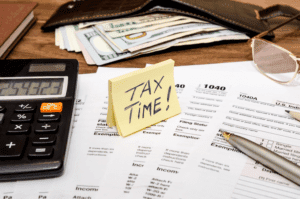
In short, the flexible budget is a more useful tool when measuring a manager’s efficiency. It is also a useful planning tool for managers, who can use it to model the likely financial results at a variety of different activity levels. It’s important to note that while flexible budgeting has its disadvantages, these challenges can often be managed with proper planning, accurate data collection, and skilled financial management. Let’s assume a company determines that its cost of electricity and supplies will vary by approximately $10 for each machine hour (MH) used. It also knows that other costs are fixed costs of approximately $40,000 per month. Typically, the machine hours are between 4,000 and 7,000 hours Car Dealership Accounting per month.

Flexible Budget Performance Report – Working Example
- A flexible budget is a method of budgeting that allows for changes based on the activity and output of the business.
- What’s important is that there’s an established logic behind what you’re using to measure sales activity and the costs that will “flex” based on it.
- Budgeting and variance analyses can help management to price the products at an optimum level, meeting the market competitions and covering the production costs.
- One of the key benefits of a flexible budget is that it allows you to better manage your cash flow.
- Finally, you want to compare your actual expenses to your budget and evaluate how effective and accurate your flexible budget was.
- For example, a company with a large seasonal variation should have a flexible budget to account for the increase and drop in supply and demand according to the seasonality.
The flexible budgets consider these changes, adjust the budgets and compare with actual results. A flexible budgeting approach narrows the gap between actuals and standards due to changes in activity levels. Understanding these components helps you create a flexible budget that accurately reflects your business’s financial situation.

Collect actual results data
- A flexible budget is much more realistic than fixed budget since it gives emphasis on cost behavior at different levels of activity.
- The variance analyses can help the management to understand the causes and cost drivers behind the change, positive or negative.
- And with a flexible budget, you have multiple contingencies to stay on plan.
- With actual data in hand, calculate the flexible budget amounts for the current period.
- A variance is the difference between what you budgeted and what actually happened.
For example, costs like rent, debt repayments, or PP&E are likely to remain fixed and consistent. Flexible budget variance is the difference in spending or revenue between the base or original budget and the budget that was flexed into. With a flexible budget, assuming you’ve created a scenario where there’s an unforeseen expense, you have a plan to follow. Flexible Budget Variance is the disparity between the actual and retained earnings balance sheet budgeted output, costs and standards.
More time-consuming to create, develop, monitor, and maintain

Whether you’re facing a crisis or seeking urgent funding, an emergency business plan can help you act quickly…. Any investor with a genuine interest in the business will want to see detailed financial pitch deck slides to gain an understanding of… For the past 52 years, Harold Averkamp (CPA, MBA) hasworked as an accounting supervisor, manager, consultant, university instructor, and innovator in teaching accounting online. For the past 52 years, what is a flexible budget in accounting Harold Averkamp (CPA, MBA) has worked as an accounting supervisor, manager, consultant, university instructor, and innovator in teaching accounting online.
- Analyzing these variances helps you understand where your assumptions were off and why.
- Budgets set strict controls on how much a business can spend on specific expense categories.
- Sometimes, you may know that a budget needs to be adjusted, but you may not know how to change the budget.
- By incorporating these changes into the budget, a company will have a tool for comparing actual to budgeted performance at many levels of activity.
- A flexible budget enables the business to make changes on the fly based on how things play out in the real world.
Additionally, the company offers sales incentives to the sales force on 5% of sales. What will be total cost of the unit production with a maximum utilized capacity of 85%? And if the company achieves lower efficiency of 75% production or higher 90% production capacity. A Flexible budgeting performance report is the one that analyzes the actual results against the standard budgets. A positive variance means the company produced favorable results and achieved higher efficiency than planned. An adverse variance means the company failed to achieve the target or standard plans.

